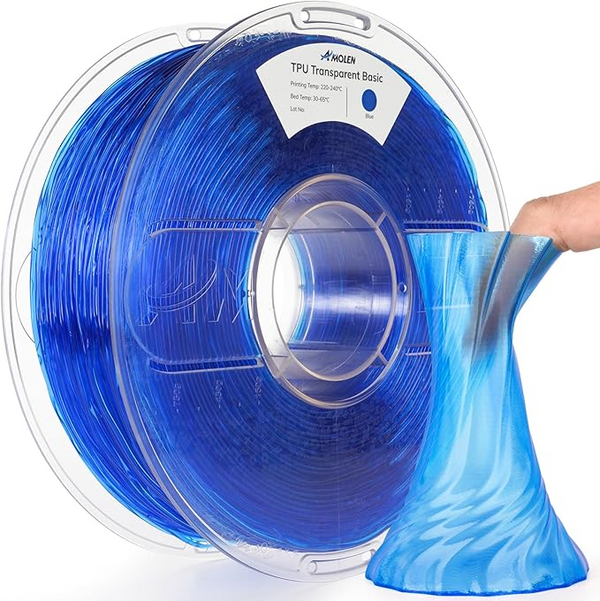Unlock Your Creativity: Discover the Magic of TPU Filament for Your 3D Printer!
In the dynamic realm of 3D printing, the materials you choose can make or break your creative projects. Among the various types of filaments available, TPU (Thermoplastic Polyurethane) filament stands out for its unique properties and applications. As the world of 3D printing continues to grow, so does the demand for versatile and durable materials that allow creators to push the boundaries of their designs. Whether you’re a hobbyist looking to craft custom items or a professional seeking to produce functional prototypes, TPU filament offers endless possibilities. Its flexibility and resilience enable you to experiment with intricate designs, making it a key player in enhancing your creative journey.

Understanding TPU Filament
TPU filament is a type of flexible filament made from thermoplastic polyurethane. This unique material is renowned for its elasticity, durability, and resistance to abrasion, making it ideal for a broad range of applications. Unlike rigid filaments such as PLA or ABS, TPU can stretch without breaking, allowing for the creation of items that require flexibility, such as phone cases or custom gaskets. One of the defining characteristics of TPU is its ability to return to its original shape after deformation, a property that is particularly advantageous in products that may encounter repeated stress. Furthermore, TPU is available in various hardness levels, giving creators the choice to select a filament that best suits their specific project needs, whether they require a soft, rubber-like feel or a firmer finish.
Benefits of Using TPU Filament
The benefits of using TPU filament in your 3D printing projects are numerous. One of the most significant advantages is its shock absorption capability, which makes it perfect for items that may experience impact or stress, such as protective cases or wearables. Additionally, TPU is highly resistant to wear and tear, which extends the lifespan of printed objects, especially those used in high-friction scenarios. Its flexibility allows for the creation of intricate designs that might be challenging with more rigid materials. For instance, I remember a friend who printed custom shoe insoles using TPU filament; the comfort and adaptability of the insoles significantly improved his experience during long runs. This versatility makes TPU a popular choice among designers and engineers alike, as it can be used in everything from automotive parts to medical devices.
Applications of TPU Filament in 3D Printing
TPU filament excels in a variety of applications, showcasing its versatility across different industries. In the realm of prototyping, its flexibility and durability allow designers to create functional models that can withstand real-world testing. In fashion and wearables, TPU is increasingly used to craft items like wristbands or custom-fit clothing, as it offers comfort and mobility. The automotive industry has also embraced TPU for creating items such as seals and gaskets, which require both resilience and flexibility. Additionally, in healthcare, TPU filament has made its mark in producing prosthetics and other medical devices that demand a high degree of customization and comfort. My neighbor, an engineer, recently shared his experience in using TPU to produce a prototype for a wearable health monitor, highlighting how the material’s properties enabled him to create a product that was both functional and comfortable for users.
Tips for Working with TPU Filament
While TPU filament is an excellent material for 3D printing, working with it does require specific knowledge and techniques to achieve the best results. First, ensuring proper bed adhesion is crucial; using a heated bed can significantly reduce warping and improve the first layer's adherence. Many users find that applying a thin layer of glue stick or blue painter's tape on the print bed enhances adhesion. Additionally, adjusting the printing settings is vital; lower printing speeds typically yield better results with TPU. It's advisable to start with a speed of around 20-30 mm/s to avoid issues with stringing or clogging. Post-processing can also enhance the final product—light sanding or applying coatings can improve the surface finish and durability. My friend who frequently prints with TPU emphasizes the importance of patience and experimentation, as finding the right settings can make a substantial difference in the end result.
Exploring the Potential of TPU Filament
In summary, TPU filament offers a wealth of opportunities for creators looking to explore the possibilities of 3D printing. From its unique properties to its wide range of applications, TPU is a material that can enhance both functionality and creativity in your projects. By understanding its benefits and mastering the techniques required for successful printing, you can unlock a new dimension of design possibilities. So, whether you're crafting prototypes, developing wearable technology, or simply experimenting with new ideas, consider adding TPU filament to your toolkit and see where your imagination can take you!








